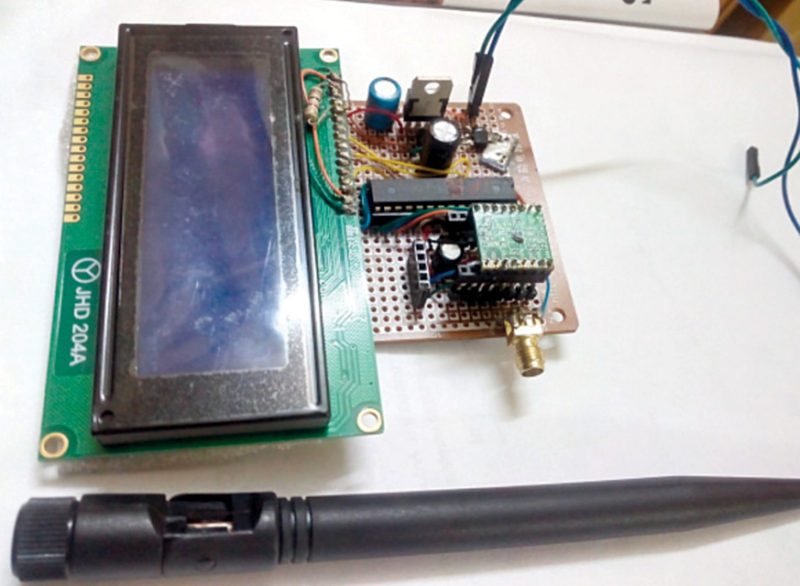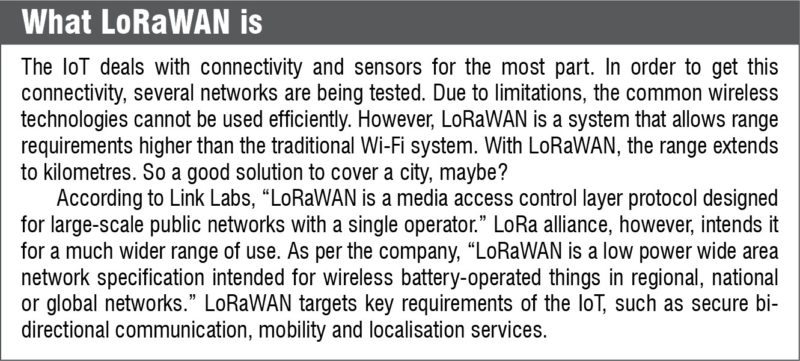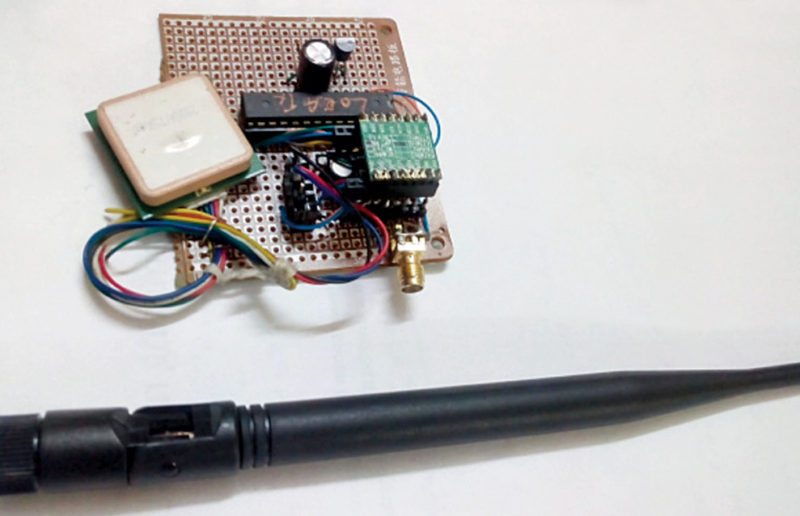Google trends graph shows a rapid increase in the search for Long Range Wide Area Network (LoRaWAN) since April 2015. “Initial challenges have been in making the common person understand the use cases. Post that, public response has been overwhelming,” said Rishabh Chauhan, global community manager, The Things Network, in an earlier interaction with EFY. It seems to have turned into a global phenomenon ranging over some very interesting applications.
We were able to find one use case in the Indian subcontinent as well. Using LoRaWAN, engineers solved the problem of indication for chlorine gas leakage in power plants. Chauhan says, “A lot of people are using the technology and trying to evaluate which use case works for them, and eventually adopting the network.” Turns out, it makes a lot of sense to implement LoRA in real-life problems.
However, Krupa Shukla, CEO, Yups Tech solutions, highlights some issues, “LoRA is becoming popular because of its low cost and low power consumption, but its communication architecture is still at an evolving stage.”

Developments in LoRaWAN
Using frequencies lower than 2.4GHz or 5.8GHz enables much better coverage, especially when the nodes are inside buildings. Sub-1GHz frequencies are normally used; however, the technology is frequency agnostic.
LoRa wireless system makes use of unlicensed frequencies available worldwide. Commonly-used bands include 868MHz for Europe, 915MHz for North America and 433MHz band for the Asian subcontinent. However, another classification could be spread spectrum versus narrow-band system.
Spread spectrum through the years
The secrets of spread spectrum were not unknown to the US military. Since spread spectrum is below noise level, it is neither decipherable nor it can be jammed, intentionally or unintentionally. Even though the jamming noise can be introduced, lack of a key-set does not allow it to spread and mix with the original signal, thereby jamming it without any effect. It is immune to major atmospheric conditions as well.
Since World War II the US military have been deploying spread spectrum for their torpedoes and missiles to hide them from deciphering, only at great cost. The cost has reduced significantly and, in the recent years, companies have released hardware compatible with spread spectrum signals at a very low cost.
What spread spectrum lacks. In comparison, Narrowband IoT (NB-IoT) has advantages of an already mature ecosystem for mobile networks with support from telecom equipment vendors. “Long Term Evolution also has an advantage here, as no time and cost has to be invested in the infrastructure, comparatively,” adds Shukla.
NB-IoT technology standardised by 3GPP standards body is a narrow-band radio technology specially designed for the IoT. With capabilities like indoor coverage, low cost, long battery life and support for a large number of devices, this technology can be deployed in Global System for Mobile communication and Long Term Evolution spectrum. It uses licensed spectrum to provide secure and stable services.
LoRaWAN has the advantage of being an open platform to facilitate various enterprises entering the IoT application market. “Earlier we had Wi-Fi, Bluetooth and such systems, but we could not connect everything non-computer to the system. Here, we have a very simple sensor that can be attached and then we can connect the hardware to the system,” added Chauhan. “Once you get through the initial phase of deployment, it gets easier to work with the system.”
Interesting implementations
Some sensors, some connectivity and with proper embedded development skills, you could have your own IoT system. Applications include interfaces, connected cars, entertainment, residences and smarthomes, wearable technology, quantified self, connected health and smartretail. As for LoRaWAN, areas of implementation focus on connectivity. IBM long-range signalling and control, or implementation by Tata Communications are just the tip of the iceberg. With proper implementation, the possibilities are endless.

With increased usage, availability of software is no more a concern. Software available on the Internet makes life easy in handling LoRa radios. Using HOPE LoRa transceivers connected on serial peripheral interface bus, Somnath Bera, additional general manager, NTPC Ltd, solves a problem of indication in chemical plants. Command files in the software, for example, make working very easy on LoRaWAN. Bera says, “In less than ten lines one can make these radios up and running using available headers.”
He explains the problem, “The status of chlorination plant chlorine leakage along with chlorine cylinder temperature was not available at the control room of the new chemical plant, which is situated 3.5km away from the chlorination plant.” Since the control room of the new chemical plant is situated at some distance, reaching there would take some time. Using Wi-Fi at this range becomes meaningless. Requirement of bi-directional transfer of data between the control system and the chlorination plant lead to the involvement of LoRaWAN.

Nationwide LoRa networks
Earlier this year, Netherlands became the first country to implement LoRaWAN, with the project taking about eight months. “Last year we identified an increasing demand for low-power network technology for IoT applications. We are responding to this by choosing LoRa, so millions of devices can be connected to the Internet in a cost-effective manner,” said Joost Farwerck, chief operations officer and member of the board of management, KPN, in a press release.
SK Telecom has also announced the availability of a nation-wide LoRa network in South Korea this year. The firm offers 100MB of data per month for US$ 1.75.
Another South Korean fixed-line telecom firm, KT, has plans to invest in NB-IoT network and offer free of charge 100,000 modules to developers. Might just be for the first year, it can certainly drive adoption.
There are also proof-of-concept projects underway, which could implement LoRaWAN in the future. Baggage handling, facility services and systems to monitor rail switches are some real-life examples.
Security is just one issue
Ryan D’Costa, business development manager, inventrom, says, “You do not want your data to fall into the wrong hands.” Shukla says, “Since it is an open network, data security is a big question.”
Shukla adds, “It might look lucrative with respect to cost and power, but industries cannot take the risk of data hacks, so currently they use LTE based gateways and industrial-IoT (IIoT) solutions.”
Reports have highlighted some of the challenges and issues associated with LoRaWAN implementation in a white paper published recently. Areas demanding special attention in IoT solutions are security, interoperability and manageability of the solution. With such an open network, security becomes a relevant factor.
A report from HP brings to light the state of current systems. It reads, systems at present allow passwords as simple as 123456. With upgraded security in the area, we can possibly look to a future with open networks becoming the primary medium of communication. The paper also reveals dependence on out-of-the-box solutions. Twenty nine per cent of companies look to IoT Cloud platforms to lead their development projects.
“It is important to follow good practices like using secure Internet protocols like transport layer security, sanitising your inputs, ensuring the firmware is updated to the latest version and so on,” says D’Costa. Present LoRa systems use two static keys that are stored in the device and in the gateway. It could be easy to duplicate the key with a device that is not under surveillance. Also, storing keys on a device in a secure manner is quite complicated. Using a secure element hardware security module looks to be an interesting solution, with an increase in complication and expense. Advanced encryption standard-cipher based message authentication code, or AES-CMAC protocol, which includes encryption and integrity, is used for communication between the device and the gateway.
Where LoRaWAN is headed
Major IoT applications require only transmitting tiny bits of data to monitor remote devices. Mobile systems are not geared for battery efficiency or moving little bits of data inexpensively. So a low power wide area network is required for such applications.
According to Digitimes research, “LoRA Alliance in June 2015 released LoRaWAN 1.0 in competition with NB-IoT. As of end of March 2016, LoRaWAN had been commercially deployed in 13 countries and trialled in more than 60 other countries.”
In a more regional update, “Shortly, we are going to deploy LoRa for some more areas in remote telemetry, though heavily interfering atmosphere is a challenge, like bringing remote cooling tower or individual cell temperature data to the control room, remote ash slurry line temperatures, etc,” says Bera. He continues, “We will place the receiver at the height of the boiler, where it will be in line-of-sight for all respective senders.”
Saurabh Durgapal is working as technology journalist at EFY








